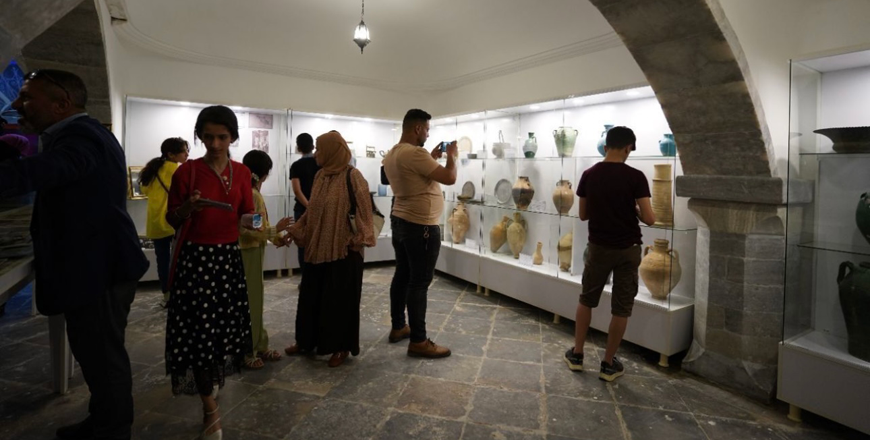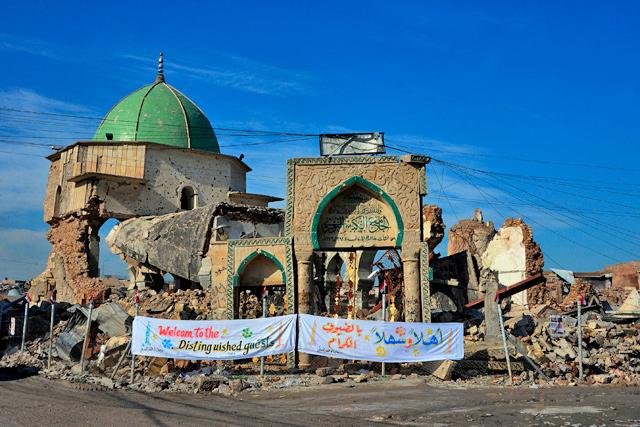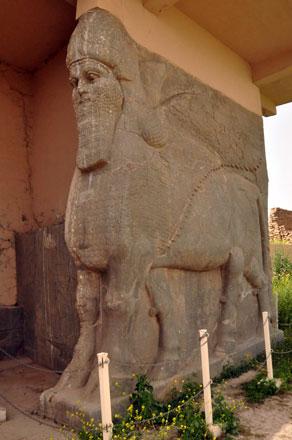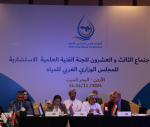You are here
Rebuilding Iraq: Efforts ongoing to preserve Mosul’s history, resurrect its glory
By Sophie Constantin - Oct 14,2024 - Last updated at Oct 14,2024

This file photo taken in 2017 shows a general view of the destruction in Mosul’s Old City (AFP photo)
AMMAN — In the heart of Mosul, a city scarred by war, a remarkable initiative is working to reclaim the heritage and cultural identity lost during years of devastation. As Iraq embarks on a broader recovery from conflict, preserving cultural heritage becomes essential to reconnect people to their roots and restore pride in their identity.
Historical importance of Mosul
Mosul, meaning “the linking point” in Arabic, located 465 kilometres northwest of Baghdad, along the west bank of the Tigris River, lies opposite the ancient Assyrian city of Nineveh. Throughout history, Mosul has served as a cultural crossroads, connecting China to the east with the Mediterranean to the West, Anatolia to the north, and Mesopotamia to the south. The city evolved from Nineveh’s prominence after the fall of the Assyrian Empire (612-559 BC) and became a major regional centre during the Median, Achaemenid and Islamic periods.
Mosul’s Old City reflected Iraq’s diverse ethnic and religious background, with mosques, churches, shrines coexisting for centuries. Its architecture reflects a blend of Islamic and Christian Nestorian influences, particularly through intricate brick facades and muqarnas vaults. However, this cultural wealth was jeopardised during the city’s occupation by the Daesh terror group from 2014 to 2017. During this period, landmarks such as the Nouri Mosque and the Hadba minaret were damaged or destroyed, and books, manuscripts and artefacts were deliberately burned or looted, as reported by UNESCO.
A response to destruction
The war left nearly 80% of Mosul in ruins, severing people’s connection to their heritage. “Cultural landmarks that once embodied the city’s identity were reduced to rubble, even the Mosul Civilisation Museum was deliberately destroyed under Daesh rule,” said Ayoob Thanoon, head of the Mosul Heritage Foundation, to The Jordan Times.
From this crisis came the idea of the Mosul Heritage Foundation, initially introduced as a social media platform. The idea aimed to document Mosul and its heritage –a mission to safeguard, document, and restore what remains. “The conviction was established here that there are people who want to obliterate this city and its history through this war,” Thanoon said.
Through various activities, the initiative ultimately evolved into a formal institution. “We focus on three main goals in the foundation: preservation and documentation of Nineveh’s cultural heritage, expanding to include broader Iraqi heritage, development of skills for those working in heritage-related fields, and the promotion of tourism through events and education focused on antiquities."
Building a community museum
Since its founding, the Mosul Heritage Foundation has grown from a volunteer-led initiative into a dynamic cultural hub. One of its greatest achievements is the creation of a “community museum,” housed in a heritage home called Al Rahyem, located along the Tigris River between the Bashtabya and Qara serai castles.
This traditional Mosul house serves as both the foundation’s headquarters and a museum where locals donate heritage pieces, with each contribution bearing the name of the donating family. This community-driven model fosters a sense of pride in preserving Mosul’s cultural memory. The museum also contains many paintings that were also donated by artists from the city of Mosul and Nineveh Governorate, reflecting the religious, cultural and ethnic diversity of the region.
“The foundation also collaborated with the local Qaf Lab Company to create ‘Iraq’s first virtual museum’ about the antiquities of the Nineveh Governorate,” Thanoon underlined. Using augmented reality (AR), and hologram technologies, visitors can explore archaeological sites lost to war, recreated digitally to reflect how they once stood.
Post-war recovery
The journey of establishing the Mosul Heritage Foundation was not without challenges. “In 2017 and 2018, people’s priorities were relief efforts – rebuilding homes and bringing displaced families back,” Thanoun explained, adding that he was therefore personally raising awareness on social media. The preservation of Iraqi culture seemed secondary during the city’s recovery.
However, in 2020, the foundation officially launched as a platform on social media that expanded into on-the-ground activities, including castle clean-ups, festivals, and guided tours for students to archaeological sites.
Local efforts to global partnerships
“We started the foundation with self-financing and self-efforts,” explained Thanoon. Initially financed through local community efforts and small campaigns on social media, families started to donate heritage pieces, then the foundation gradually built partnerships with international organisations.
A turning point came when UNESCO selected the Al Rahyem house as a community centre under its “Reviving the Spirit of Mosul” initiative launched in 2018, in partnership with the “Volunteer with Us” Foundation. Other key collaborations include partnerships with USAID, the Goethe-Institut, and Iraqi institutions such as the Nineveh Antiquities and Heritage Inspectorate, the University of Mosul and the Mosul Municipality.
These partnerships have provided essential funding, technical expertise and global visibility for the foundation’s work. Since opening its doors, the Mosul Heritage Foundation has hosted more than 100,000 visitors in two years. Beyond showcasing cultural heritage, the centre has become a hub for workshops, exhibitions, and events that promote education and tourism.
Looking ahead, the Mosul Heritage Foundation aspires to be more than a physical place. “We look forward to the institution being an ‘idea’, not just a house, but more an idea to preserve the cultural heritage that the city of Mosul enjoyed, and its ancient history. We envision the institution as a research centre and a training ground for building capacities concerned with heritage and developing those involved in preserving heritage,” Thanoon said. He highlighted the need to foster a society that is proud of its identity and connected to its cultural roots.
The foundation’s vision is ambitious: to transform Mosul into a sustainable, heritage-rich city that thrives on its human and cultural connexions. Central to his mission is the development of tourism, with conferences, research initiatives, and educational tours playing key roles.

Related Articles
MOSUL, Iraq — Iraqi officials on Thursday said Mosul’s once-celebrated museum had entered the final stages of restorations ahead of a planne
MOSUL, Iraq — Iraqis on Sunday laid the cornerstone in rebuilding Mosul's Al Nuri Mosque and leaning minaret, national emblems destroyed las
PARIS — The city of Mosul is intertwined with human history, tracing its roots to 4,400 years ago when civilisation rose in fabled, fertile

















